Cedar Bog is a state nature preserve that’s managed by the Ohio Historical Society due to its historical significance… or should I say prehistorical significance? There are a number of plants and animals in the preserve that were common in this region at the close of the last Ice Age, but which are now found in cooler, North American climates. Because it is such a unique habitat, in 1941 it was the first nature preserve designated by Ohio. Today it is one of Ohio’s 25 National Natural Landmarks.
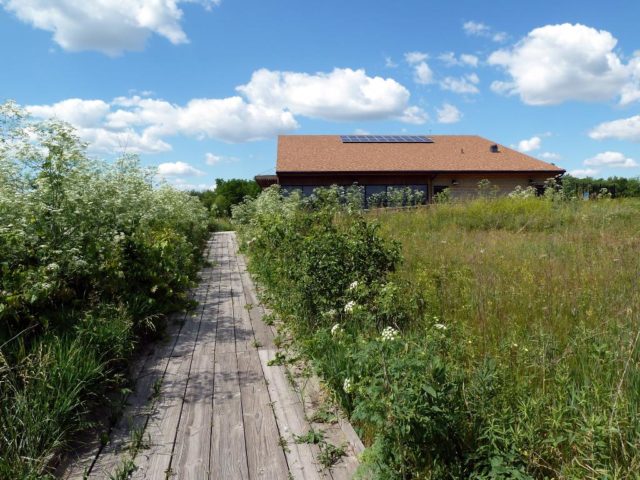
The Habitat
Before going further, I feel compelled to say that Cedar Bog is not a bog. Like Jackson Bog it’s really a fen. I discussed the difference between bogs and fens in an earlier post, Bogged down by wetland terminology, but the key point in distinguishing between a fen and a bog is noting how a particular wetland became wet. Fens are created by water bubbling up from an underground aquifer while bogs are created by rainfall pooling in a low area. The water source has several important consequences.
- The water in bogs doesn’t flow anywhere. Water enters a bog via periodic rains and leaves via evaporation. In contrast water pressure in an underground aquifer forces water to continually bubble up into a fen. The continual inflow means that there is also a continual outflow. So a mnemonic for remembering the difference between fens and bogs is that Fens Flow. The water in one of the streams at Cedar (really a fen) Bog eventually makes its way to the Mississippi River and via that, the Gulf of Mexico.
- Because of its underground source, the water in fens is a constant, cool temperature. At Cedar (really a fen) Bog, the water remains between 45 and 50 degrees Farenheit whether its summer or winter. This cool water provides a unique habitat for some unusual creatures, such as the American Brook Lamprey. In contrast the water temperature in bogs varies with the temperature of the air.
- Sphagnum moss thrives in the stagnant pools of water found in bogs. When the sphagnum moss dies and decays, it releases tannins which make the water look brown. However sphagnum moss doesn’t grow in fens, so this water tends to be clear.
- Since the water in Cedar (really a fen) Bog has bubbled up through limestone, the water is also hard (full of minerals) and alkaline. Sometimes incompletely dissolved limestone bubbles up with the water; this is called “marl”. If you feel the mud in such a place, the marl makes it feel gritty. However the water in a bog is acidic, and the mud doesn’t have this gritty texture.
For the convenience of visitors to Cedar Bog, there is a wheelchair-accessible, mile-long boardwalk that passes through a variety of habitats: savannah, wet forests (swamps), and wet meadows (sedge meadows). Here’s a sampling of what you see at different points on the boardwalk.
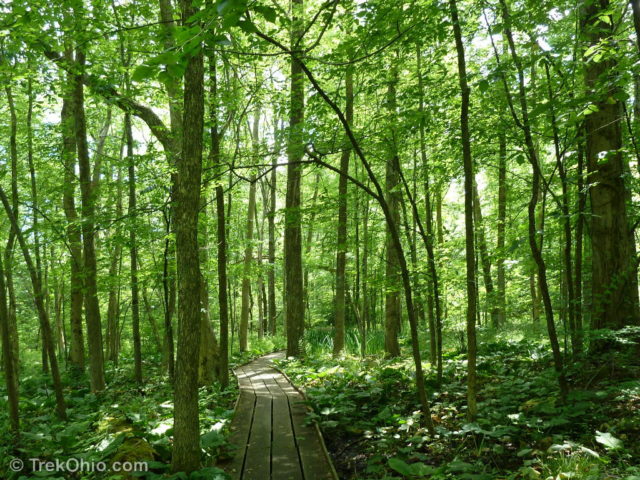
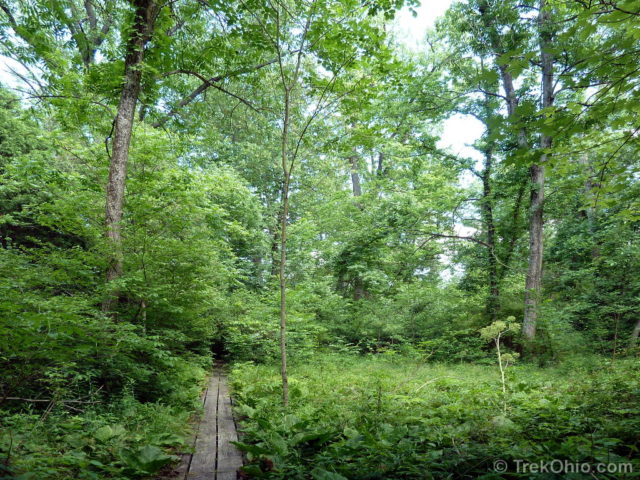
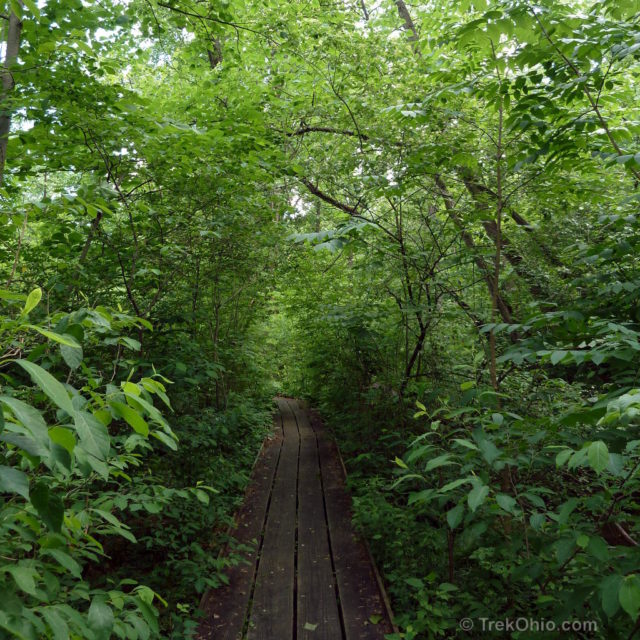
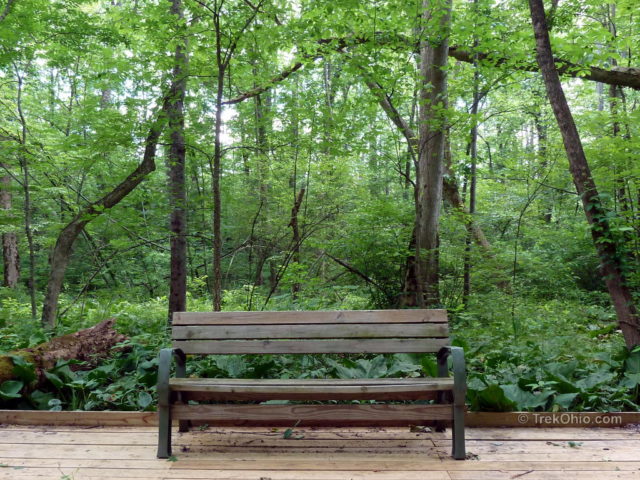
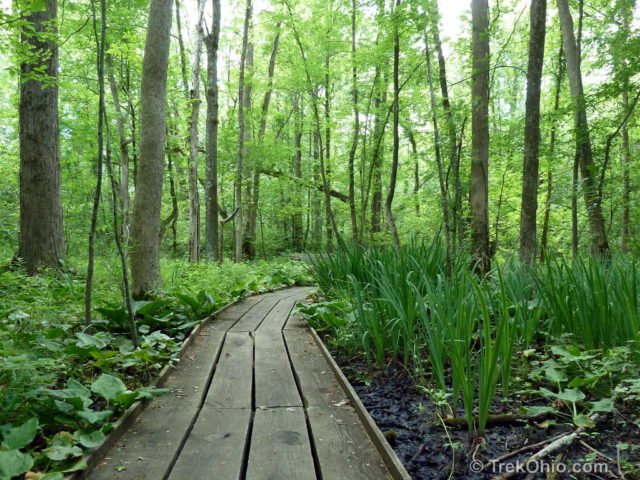
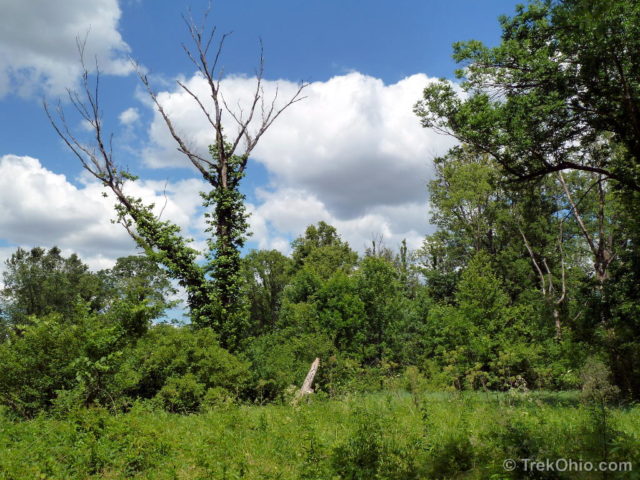
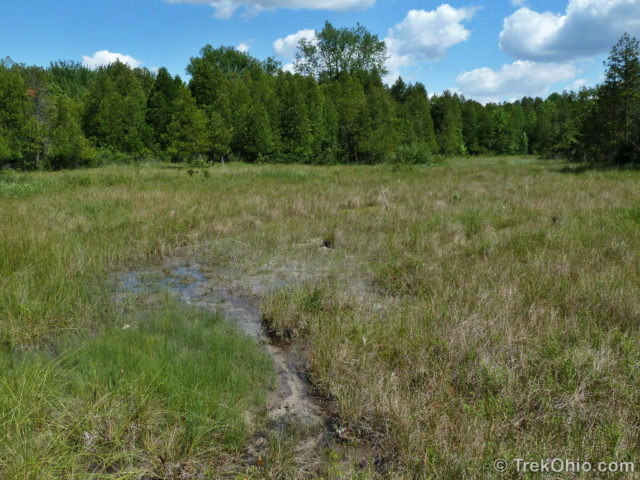
The sedge meadow above is edged by Northern White Cedar. This is a plant that normally grows in a colder climate, but which remained in this region after the Ice Age. Unlike the more common red cedar, the white cedars needles are flat and soft to the touch. These cedar trees would readily move into the meadow after the vegetation here develops the soil as part of natural succession; however, to preserve the rare species that live here, the park management prevents the cedar trees from taking over.
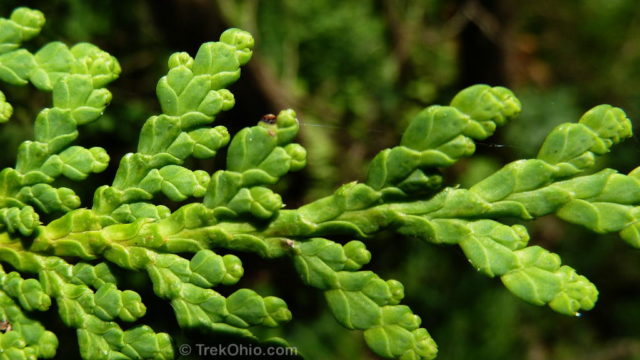
Wildflowers
I was delighted by the number of wildflowers. Here is a sample of the ones that I saw during my June 6th visit.
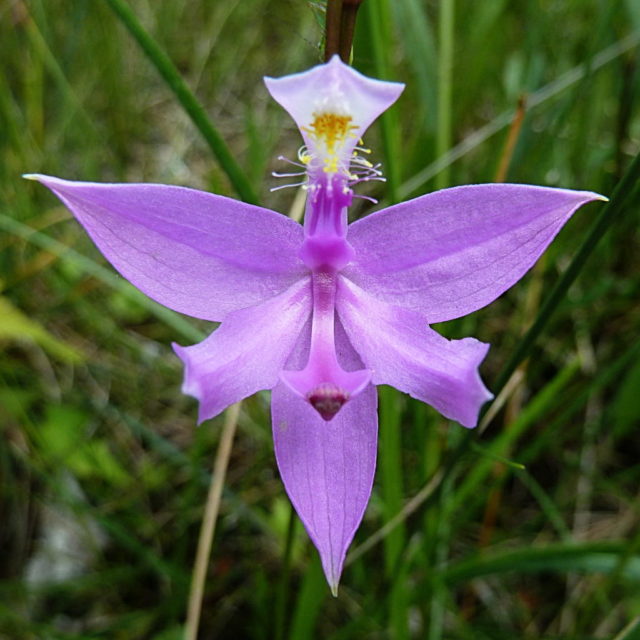
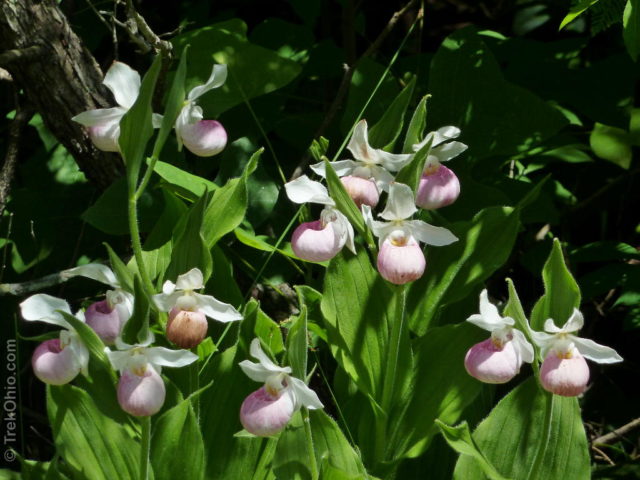
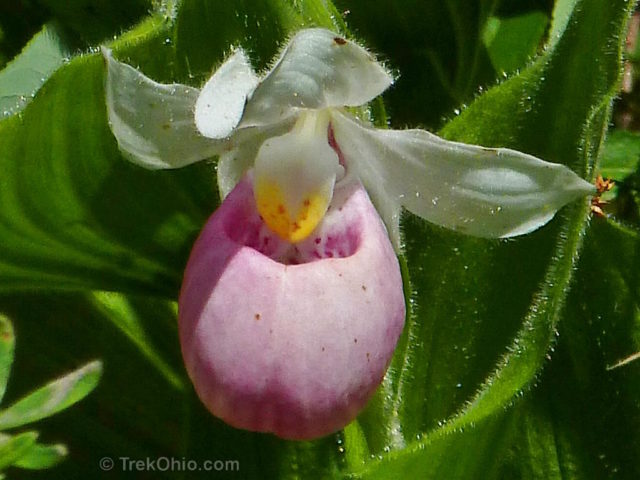
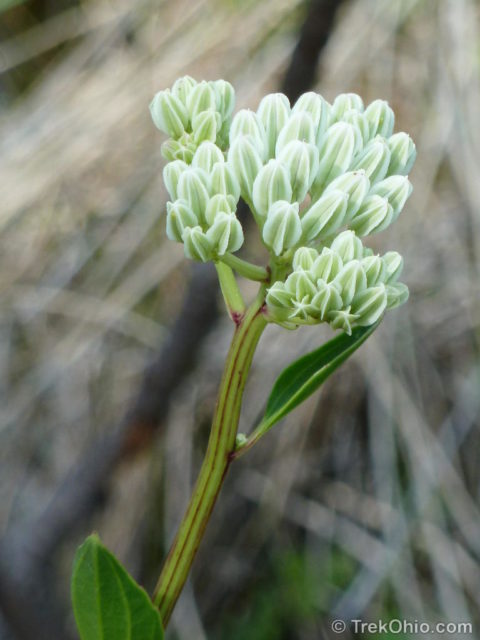
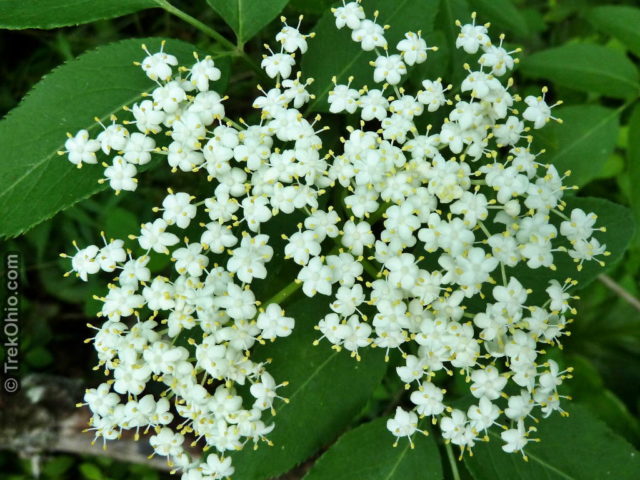
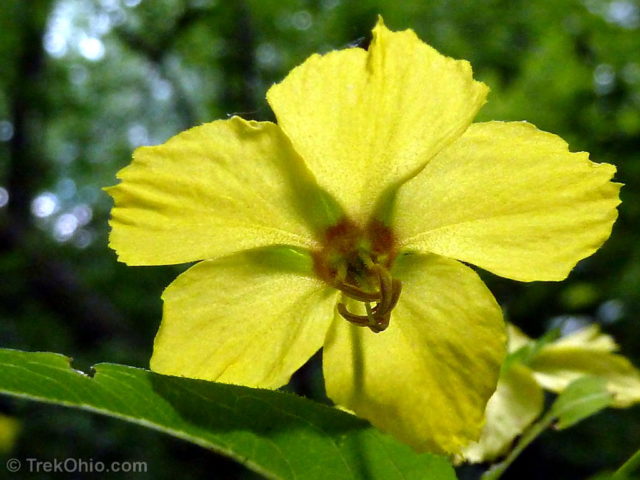
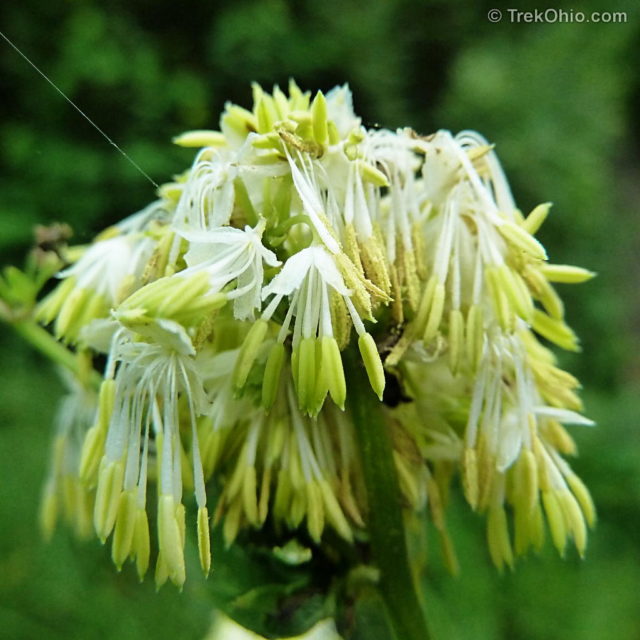
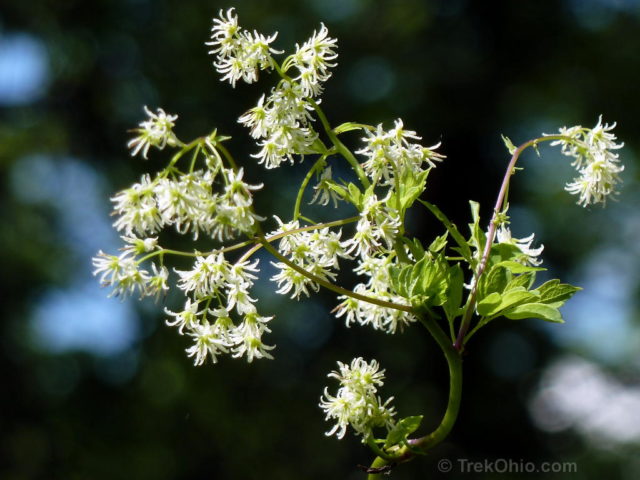
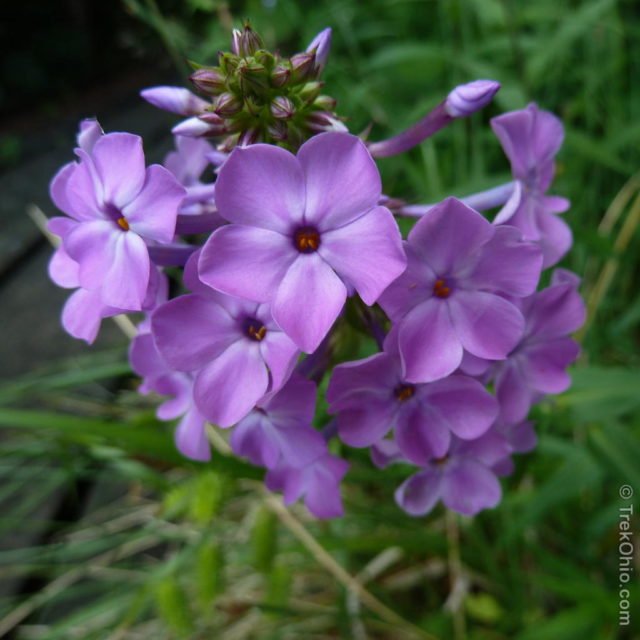
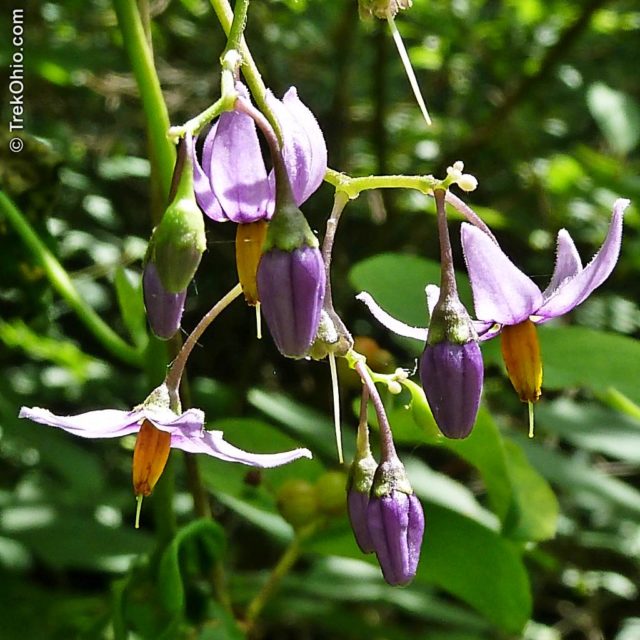
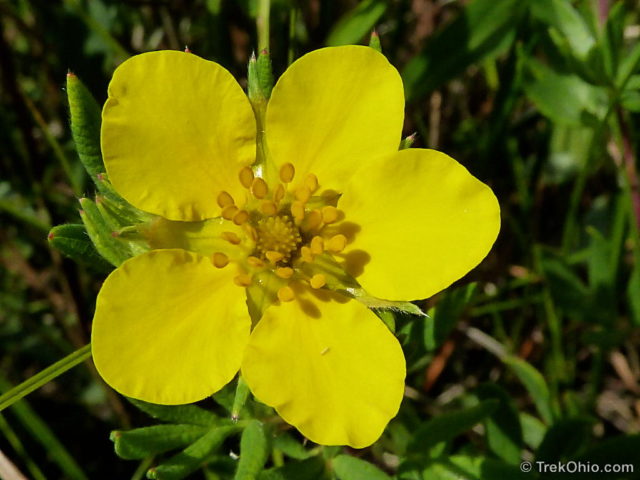
Critters
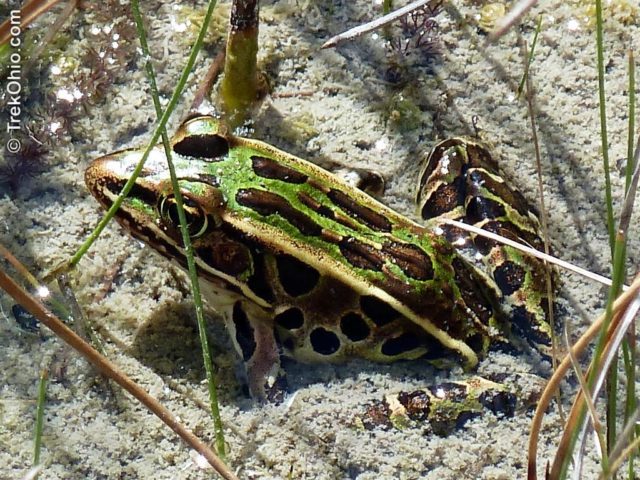
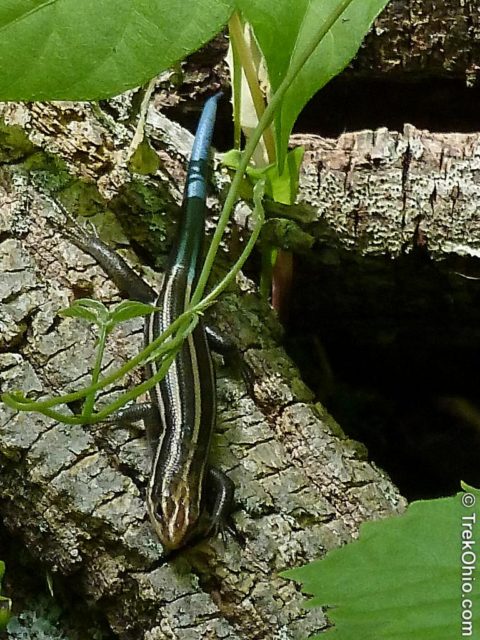
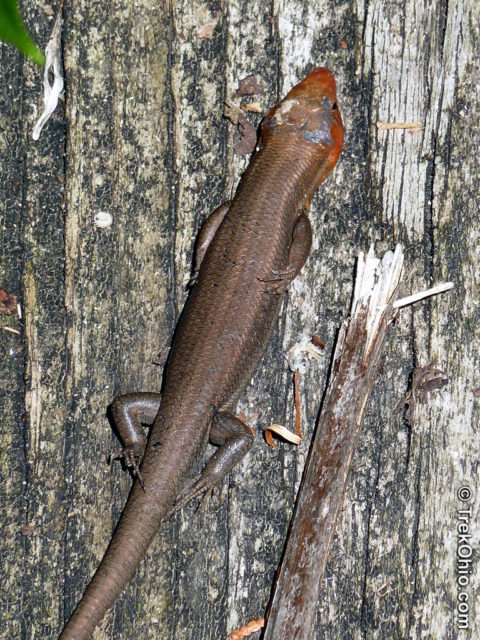
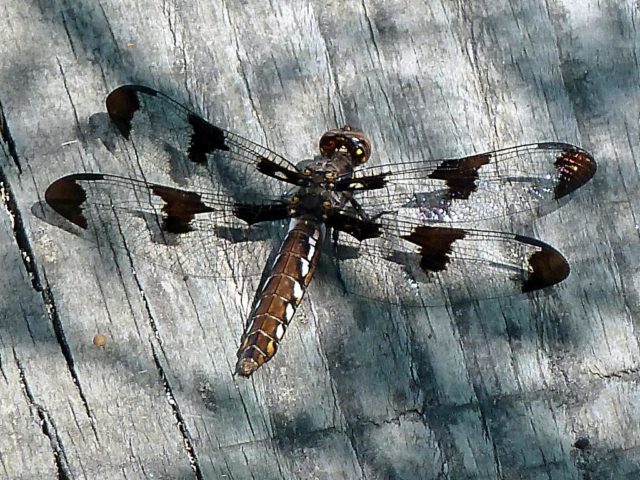
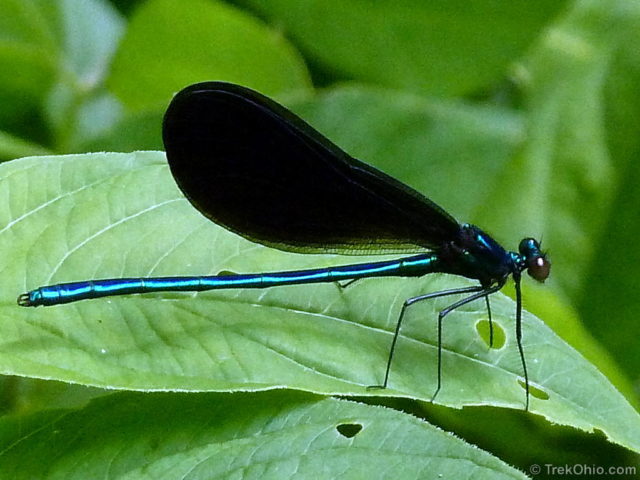
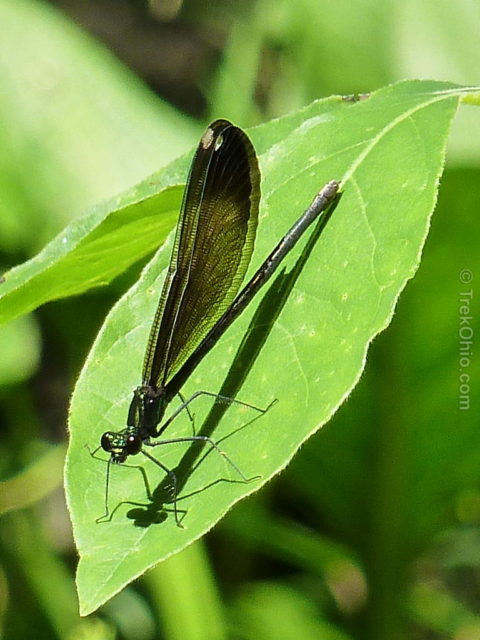
Additional information
- TrekOhio: Champaign County Parks & Nature Preserves – this is the county where Cedar Bog is located; check out this page for links to the official site and to learn about nearby parks and preserves.
- Cedar Bog, published by the Ohio Historical Society
- Jim McCormac: Rare plants of Cedar Bog
- Five-lined Skink (Eumeces fasciatus), published by the Savannah River Ecology Laboratory
Location
Like many properties managed by the Ohio Historical Society, visitors are asked to pay an admission fee: $5 for adults; $4 for students and children six years old and older; free for children under 6. Admission is also free for members of the Ohio Historical Society. The preserve isn’t open all day, every day. Check the Ohio Historical Society’s web page on Cedar Bog (one of the links above) for operating hours.
Prior to going on to the boardwalk, I sprayed DEET on myself just in case mosquitoes might be an issue. I was untroubled by them while I explored the area.
Here’s the address: 980 Woodburn Road, Urbana, Ohio 43078. And these are the GPS coordinates: 40.055607, -83.792328
More on Champaign County
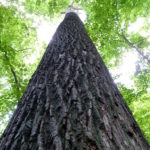
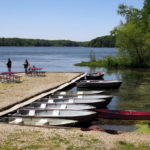
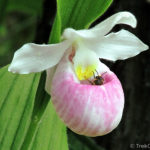
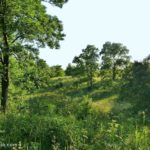
I love all the great info and photos on your site! Great job! 🙂
When I looked over the your blogs tags, I had to check out the werewolf/dogmen of Silver Creek. Amusing.
I believe the dragonfly is a 12 spotted skimmer.
Randy, thanks for suggesting a dragonfly species. However, the catch is this one really doesn’t seem to have any white spots on its wings (that’s kind of hard to tell from the bleached wood behind the wings).
I just learned that the female Common Whitetail Dragonfly doesn’t have a white tail. ❗ After looking at the Wikipedia Article for this species, I think that’s what this is.
beautiful place. beautiful flowers. love the orchids. thanks for the trip 🙂
Your welcome, marviiilous. Have a great day!
Really beautiful photos Deb!
Thank you, Carol. Your comment arrived just as I was looking over your latest posts. 🙂
🙂
What a gorgeous bog.. I mean fen! So is the pH in a fen different than a bog? I would imagine that would affect the species composition.
Yes, the pH in a fen is alkaline, whle the pH in a bog is acidic, and you are right that the distinct habitats tend to support different plant and animal life.
Just to keep things interesting, we are soon going to post an article on Cranberry Bog, which really is a bog… but it’s floating in the middle of Buckeye Lake. It’s a very interesting story how it came to be there. It is the only floating island in the world.
Cool, I look forward to it!